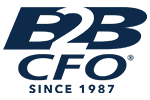
Fraud Smbs Affected At High Frequency
Posted on March 15, 2020 by Rick Daigle
Occupational Fraud
Fraud and Abuse is a real cost to our clients as stated in the 2006 Report to the Nation on Fraud and Abuse by the Association of Certified Fraud Examiners (ACFE). US businesses lose 5% of their annual revenues to fraud; that translates to $652 billion in the United States based upon GDP.
Small businesses continue to suffer a disproportionately large percentage of fraud losses. The median loss for companies with less than 100 employees is $190,000. This is larger than the median loss in even the largest organizations. The most common occupational frauds in small businesses involve employees fraudulently writing company checks, skimming revenues, and processing fraudulent invoices.
One reason small businesses suffer such high fraud losses are that they generally do a poor job of proactively detecting fraud and stating their Ethical position to all employees. Less than 10% of small businesses had anonymous fraud reporting systems, and less than 20% had internal audit departments which conducted surprise audits or provided fraud training for their employees and managers.
However, uncovering fraud and its prevention has not directly been the responsibility of auditors. Sarbanes-Oxley (SOX) and new additions to SAS have expanded the auditor’s responsibility with respect to fraud detection. Question: Who is ultimately responsible for fraud prevention? The Business Owner.
Knowledge is the #1 defense against fraud, therefore business owners need a rich understanding of fraud schemes, and outlines of recommended controls.
Definition of Occupational Fraud: Occupational fraud is “The use of one’s occupation for the personal enrichment through the deliberate misuse or misappropriation of the employing organization’s resources or assets.” All occupational fraud schemes have four elements in common. The activities are: clandestine, a violation of the perpetrator’s fiduciary duties to the victim, committed to directly or indirectly financially benefit the perpetrator, and cost the employer assets, revenue or reserves. All deceptions, however, are not legally prosecutable fraud. The legal definition of fraud requires there to be damages, usually in terms of money, to the victim. Under common law there are 4 elements, all of which must be present for fraud to exist: 1) a material false statement, 2) knowledge the statement was false when it was uttered, 3) reliance on the false statement by the victim and 4) damages as a result.
Who are the Fraud Perps? Contrary to popular assumptions, perpetrators of fraud are usually first time offenders. They are good individuals put in bad places or within the “Triangle of Fraud”: Opportunity, Pressure and Rationalization. These are people who might describe their behavior with the following quotations: a) ‘There was no need for it like there was this time’, b) ‘The idea never entered my head’, c) ‘I thought it was dishonest, but this time it did not seem dishonest at first.’ They are people with “Non-Sharable” Problems: A violation of ascribed obligations, problems resulting from personal failure, business reversals, physical isolation, desiring or expected of status gaining. Let’s understand and use the correct terms…

